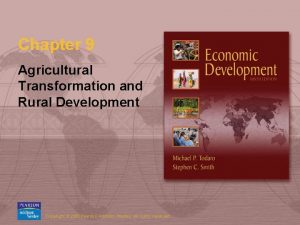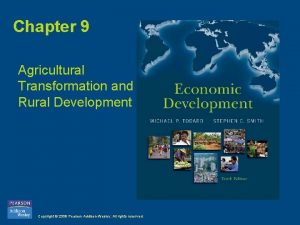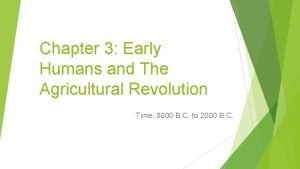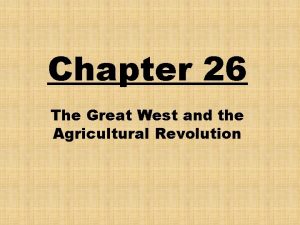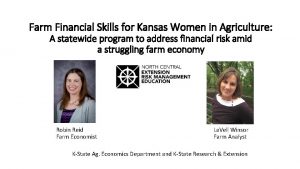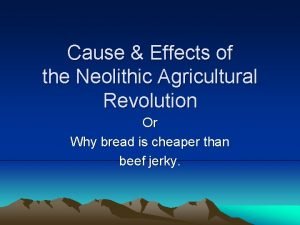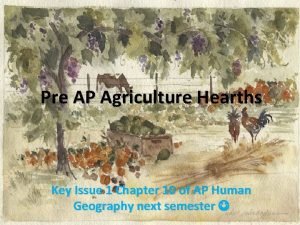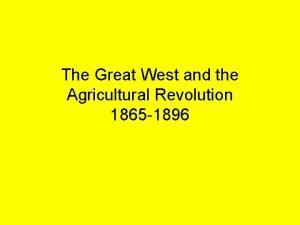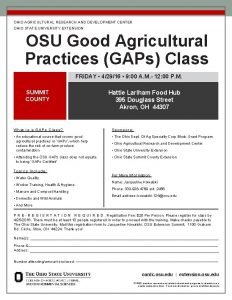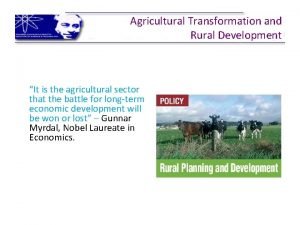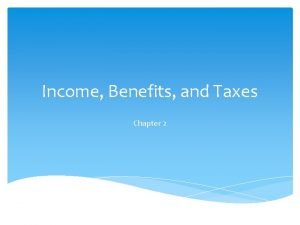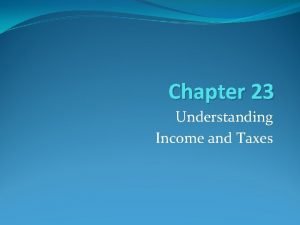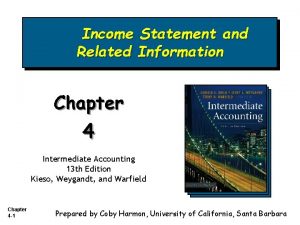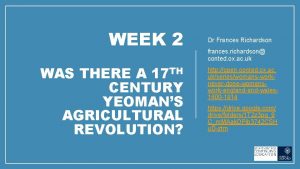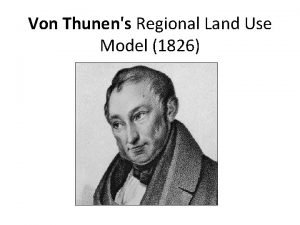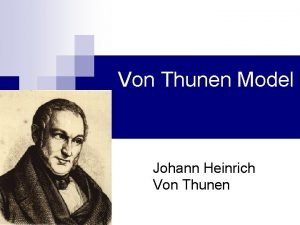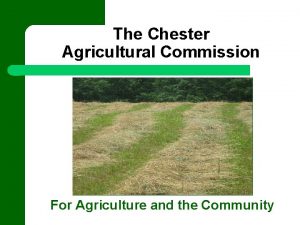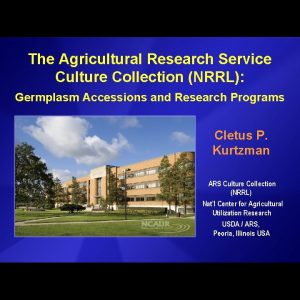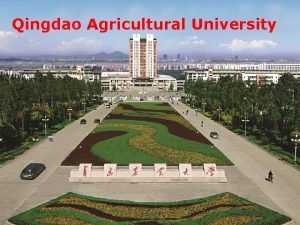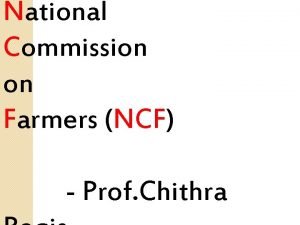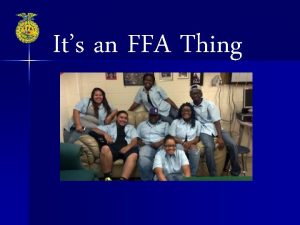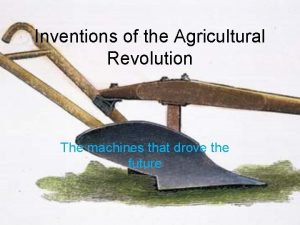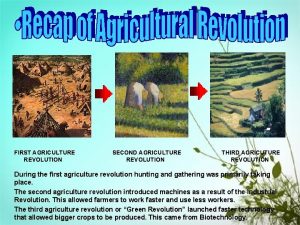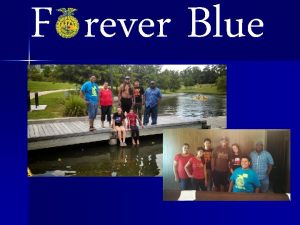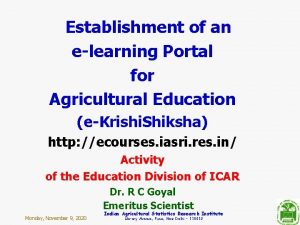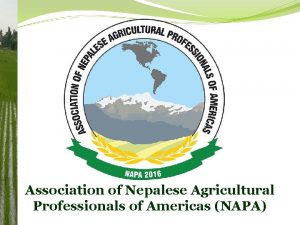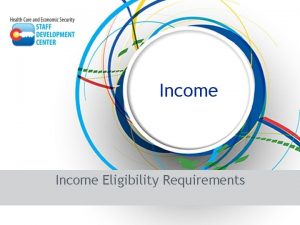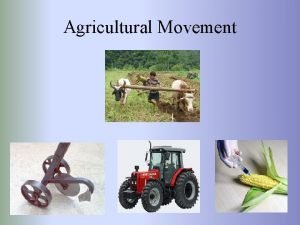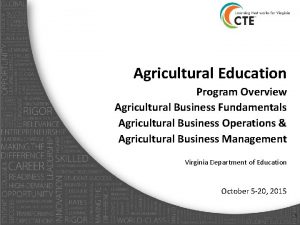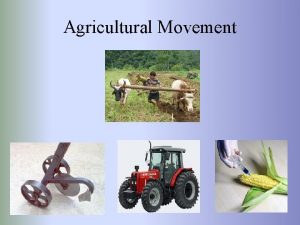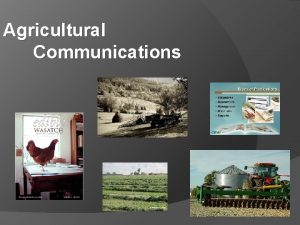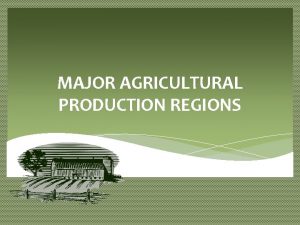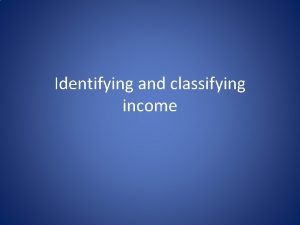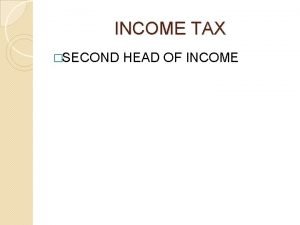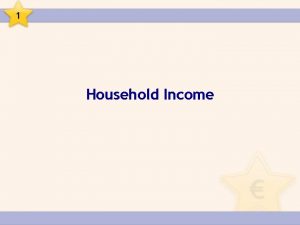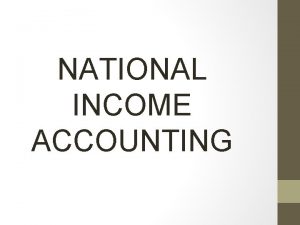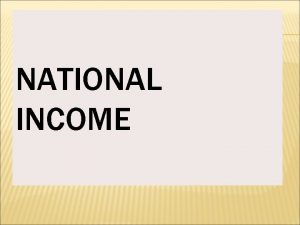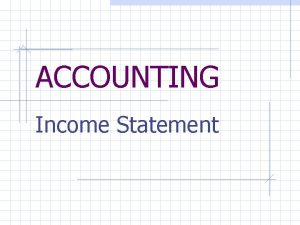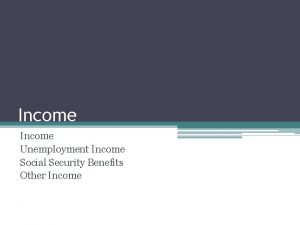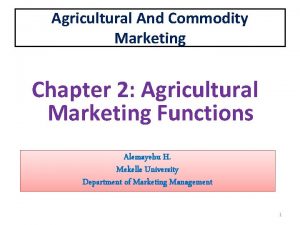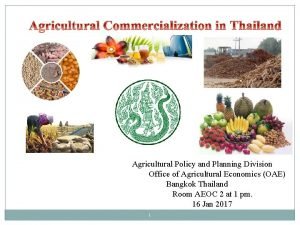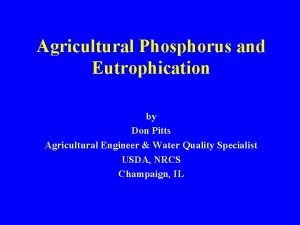Chapter 4 Income Requirements Income Requirements Agricultural and


































- Slides: 34

Chapter 4 Income Requirements

Income Requirements • Agricultural and Horticultural – Average gross income of at least $1, 000 for previous three (3) years preceding January 1 – Exception for Evergreens intended for use as Christmas Trees • Forestland – No income requirement

Income • Gross Income – Derived from the allowed activities and allowed sources before deduction of any expenses. • Average Income – Averaged over the preceding three (3) years – Accounts for variations in the income stream – Will mitigate mostly moderate adverse conditions • • Drought Flooding Hail Frost

Income Requirement • Requires that a farm unit have at least one tract that meets the minimum average gross income requirement. • If one tract meets the income requirement, no other tract in the farm unit has to meet the requirement. • However. .

Income Requirement Cont. • All tracts of the farm unit are required to be: – In commercial production – Actively engaged – Under sound management

Sources of Income • The income must be from one of these sources: – The sale of products produced from the land. – Grazing fees for livestock – Sale of bees or bee products other than honey – Any payments received under a government soil conservation or land retirement program. – Income from the Tobacco Buyout of 2004, agricultural land only.

Sources of Income Cont. • Products Grown and Consumed – There may be no direct income from the sale of the product. – While not specifically allowed by statute, the assessor may allow the owner to report the quantity of products grown and use market rates to determine an income.

Invalid Sources of Income • Examples: – Rental income – Stud and boarding fees – Training or showing of animals – Leasing of hunting rights – Sale of firewood, pine cones, pine straw, etc. – Fees for services such as plowing, mowing, baling, hauling, drying, curing or other similar operations

Question ØA property owner applies for agricultural PUV on a 15 acre tract of land, all growing soybeans. The owner submits gross income for the three prior years as $1, 100, $1, 000 and $900. Expenses for the three years total $3, 500. ØDoes the property meet the income requirement?

Answer Ø The property will meet the income requirement since the average gross income over the previous three years was at least $1, 000. Ø Expenses are not a criteria in determining whether a property qualifies under the income requirement.

Question ØOwner applies for agricultural PUV on a 12 acre tract of land, all growing hay. The owner submits rental income for the three prior years as $1, 300, $900 and $1, 100. ØDoes the property meet the income requirement?

Answer ØRental income is not a valid source of income for PUV classification. The owner will need to ascertain from the tenant farmer the gross income produced from the land.

Question ØA property owner applies for agricultural PUV and submits the following income from the past three years: $2, 300 from sale of crops, $900 in tobacco buyout payments. ØDoes the property meet the income requirement?

Answer ØThe property will qualify as the sale of crops and income from the tobacco buyout are both valid sources of income, and the average gross income is greater than $1, 000 per year.

Question Ø A property owner applies for agricultural PUV and submits the following income from the past three years: $2, 600 from sale of crops and $700 in soil conservation program payments. The tract is 13 acres with 9 acres planted in tobacco and 4 acres is enrolled in a soil conservation program (not CRP) that prohibits production on the land. Ø Does the property meet the income requirement?

Answer Ø The property will meet the income requirement since the average gross income is $1, 100. Soil conservation program payments can be used to meet the income requirement. Ø The 4 acres are not considered to be in production and will not receive PUV. Ø Therefore, the property only has 9 acres in production and will not meet the size requirement for PUV.

Question Ø Owner applies for agricultural PUV and submits the following income from the past three years: $2, 300 from sales of crops and $900 from leasing of hunting rights. Ø Does the property meet the income requirement?

Answer ØThe property does not meet the income requirements as income from the leasing of hunting rights is not a valid source of income.

Question Ø A property owner owns and operates a 22 acre apple orchard. Apples harvested from the orchard are converted on site to apple cider and other apple related products as part of the owner’s overall operation. Owner applies for horticultural PUV. Ø Does the property meet the income requirement?

Answer Ø There is no direct income from the sale of the apples, but this is clearly a legitimate horticultural operation that could have sold the apples to a processor instead. Ø In this instance, the assessor may allow the owner to report the quantity of crops grown. Ø Then the assessor may use market rates to determine an income that would be realistic if the product had been sold rather than consumed.

Question Ø A property owner applies for PUV on 23 acres that include a horse barn with eight stalls. The owner has four brood mares that have produced four foals each for the last three years. In each prior year, the owner sold three of the four foals for $3, 000 each for a total of $9, 000 annually. The owner kept the remaining foal on the farm for training and breeding purposes. Ø Does the property meet the income requirement?

Answer ØIncome from the sale of products produced by the land is a valid source of income for PUV classification.

Question Ø A property owner applies for PUV on 19 acres that includes a four stall horse barn. The remaining acreage is in pasture. The owner’s sole purpose is boarding horses and the owner rents the four stalls for $300. 00 a month for each stall. An annual income of $9, 200 is received from the operation. In addition, the pasture is included in the stall fee and is used by the boarders for riding and grazing of the horses. Owner does not produce any income from the sale, growing or training of horses. The only income produced is from the boarding of horses. Ø Does the property meet the income requirement?

Answer Ø Rental income from boarding is not a valid source of income for PUV classification. The owner will need to produce gross income from the sale of products produced from the land.

Compliance Reviews • Chapter 14 • G. S. 105 -296(j) • The farm unit must continue to meet the income requirement on a continuing basis.

Question ØDuring a compliance review, an owner reports no income for last year but reports an income of $1, 200 for each of the two previous years. Owner reports that a hail storm completely destroyed the crop last year. ØDoes this meet the income requirement?

Answer Ø Even though the owner only averaged gross income of $400 over the last three years, it is recommended that the assessor use discretion when natural disasters significantly affect the farming operation. Ø In this example, the property should be allowed to remain in PUV as long as the owner was meeting the requirements prior to the natural disaster and is working towards a quick return to commercial productivity.

Security of Income Information • Income information is confidential information and should be kept under lock and key. • Requests to view or copy an application or associated document should be honored, but the income information should be redacted.

Conversion to a Different Classification • Statutes do not address. • From Agriculture or Horticulture to Forestry: – Should likely be allowed to continue in PUV. – The converted acreage must be at least 20 acres to meet the size requirement. – The conversion should be done quickly and should not take more than one growing season.

Conversion to a Different Classification Cont. • From Horticulture to Agriculture: – Will likely always qualify. – The tract must have at least 10 acres in production. – The horticultural tract was already satisfying the income and sound management requirements. – The new agricultural crops will immediately begin producing income, thus continuing to meet the income requirement.

Conversion to a Different Classification Cont. • From Agriculture to Horticulture – Annual Crops: • Will likely always qualify. • The agricultural tract was already satisfying the size, income, and sound management requirement. • The new annual crops will immediately begin producing income, thus continuing to meet the income requirement. – Perennial Crops: • Will likely not qualify. • The perennial crops will likely not begin generating income for several years.

Conversion to a Different Classification Cont. • From Forestry to Agriculture or Horticulture (Annual Crops) – The most difficult scenario. – With a quick conversion, income production is immediate but the tract will fail to meet the 3 year income production requirement. – The assessor will have to make a judgment call if ever presented with this particular situation.

Question Ø A 23 acre tract is 100% planted in trees and is in forestry PUV. The owner clears all 23 acres and immediately plants an annual horticultural crop. Owner files a new application for horticultural PUV during the next listing period. Ø Does the property still qualify for PUV?

Answer Ø Horticultural size requirement is met and the property will immediately begin producing income. Ø However, at the time of conversion to horticulture, the property cannot show that it has produced an average gross income of $1, 000 for the three preceding years. Ø The tract probably does not meet the income requirements because it was previously in trees. Ø The assessor should have a policy in place for similar requests.
 Chapter 9 agricultural transformation and rural development
Chapter 9 agricultural transformation and rural development Chapter 9 agricultural transformation and rural development
Chapter 9 agricultural transformation and rural development Chapter 3 early humans and the agricultural revolution
Chapter 3 early humans and the agricultural revolution Chapter 26 the great west and the agricultural revolution
Chapter 26 the great west and the agricultural revolution Real gdp per capita formula
Real gdp per capita formula Tax payable
Tax payable Operating income formula
Operating income formula Accounting income vs taxable income
Accounting income vs taxable income The rise of civilization lesson 2 the neolithic revolution
The rise of civilization lesson 2 the neolithic revolution Agricultural accounting and finance kansas
Agricultural accounting and finance kansas Cause and effect of agricultural revolution
Cause and effect of agricultural revolution Early humans and the agricultural revolution answer key
Early humans and the agricultural revolution answer key Agricultural hearth
Agricultural hearth The great west and the agricultural revolution
The great west and the agricultural revolution Ohio agricultural research and development center
Ohio agricultural research and development center Agricultural transformation and rural development
Agricultural transformation and rural development Chapter 2 income benefits and taxes
Chapter 2 income benefits and taxes Chapter 23 understanding income and taxes
Chapter 23 understanding income and taxes Irregular items on income statement
Irregular items on income statement The agricultural revolution
The agricultural revolution Von thunen model frq
Von thunen model frq Bid rent theory model
Bid rent theory model Agricultural region of france with limon soil
Agricultural region of france with limon soil Chester agricultural center
Chester agricultural center Agricultural research service culture collection
Agricultural research service culture collection To practice brotherhood
To practice brotherhood Qingdao agricultural university
Qingdao agricultural university Is the component of agricultural renewal action plan
Is the component of agricultural renewal action plan Ffa brotherhood pledge
Ffa brotherhood pledge Agricultural revolution inventions
Agricultural revolution inventions The second agricultural revolution
The second agricultural revolution To practice brotherhood
To practice brotherhood Agri education portal
Agri education portal Napa nepal
Napa nepal Physiological population density
Physiological population density
